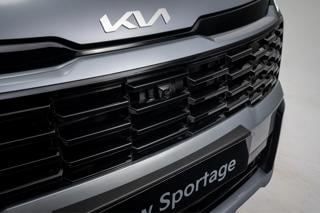Choosing cars with a hi-tech safety system could result in lower insurance premiums, but only if the equipment is fitted as standard.
Autonomous emergency braking (AEB) uses sensors to automatically apply the brakes at low speed to avoid a collision or, if the vehicle is unable to stop, dramatically reduce the severity of the impact.
The Association of British Insurers, which has authorised Thatcham Motor Insurance Research Centre to undertake all AEB testing to validate the effectiveness of individual systems, has now introduced AEB into its group rating calculations.
Many manufacturers offer AEB technology as an option, but Thatcham has confirmed only those cars that fit the technology as standard will be applicable for an insurance group reduction.
Andrew Miller, director of research at Thatcham, said: “Since there is no way of knowing if an individual customer has taken up that additional option, it cannot be recognised in an insurance group rating.
“Where policyholders have taken AEB as an option, individual insurers may be able to take account of that if they have a mechanism to do so, but that will be between the customer and the insurer.”
The drop will also be applied only after every model has been tested by Thatcham.
“We test AEB systems from the same manufacturer on their different models because of the differing mass of the vehicles and their individual engineering,” said Miller.
“Different-sized vehicles will require the braking systems to react differently in order to stop and the brakes, therefore, need to be tuned with the vehicle to react appropriately.”
Volvo’s own AEB system, City Safety, has led to an insurance rating drop of two or three groups, dependent on the model.
The technology debuted on the XC60 in 2008 and is also standard on the V40, S60 and V60 models.
However, the new V40 is the only model to benefit from an insurance drop as the others have not yet been tested by Thatcham.
A reduction in a vehicle’s group rating should result in lower insurance premiums for fleets.
The tests have to be performed outside and in dry conditions, so assessing vehicles can sometimes take much longer than expected.
Because of the adverse weather in recent weeks, Volvo has put the testing of these models on hold until the new year. It has booked more than a week with Thatcham to enable time to get the tests completed.
Other manufacturers who do not offer the technology as standard have begun looking at other ways to make it attractive for retail customers.
For example, Ford offers AEB as an option on the new Fiesta, so it is offering a 15% discount on the first year’s insurance premium with Ford Insure if the car has the technology fitted.
Thatcham has highlighted AEB technology as the most significant new active safety innovation available in the automotive industry with the potential to dramatically cut the number and severity of accidents.
Studies from the USA have already shown an overall crash frequency reduction of 27% in vehicles equipped with the system.
A recent survey undertaken by Euro NCAP found that AEB is not unavailable on 79% of car models on sale in Europe and that 66% of manufacturers do not offer an AEB system on any of their new car models.
Thatcham expects the growth of standard fit AEB to be slow as it will be based on the introduction of new vehicle platforms by manufacturers, but Miller believes a big incentive will come when Euro NCAP introduces the technology into its safety assessments from 2014.
“Aside from a lower vehicle grouping, one of the key drivers will be Euro NCAP which is introducing AEB to its overall safety assessment from 2014, thus making it much more difficult to achieve five stars where AEB is not fitted,” he said.
“We saw a similar increase in fitment of electronic stability control when that was introduced into the Euro NCAP assessment.”
Other European test centres will also be able to test AEB using the testing protocol developed by Thatcham.


















Login to comment
Comments
No comments have been made yet.